How to Use Industrial Compact Flash in Embedded Applications?
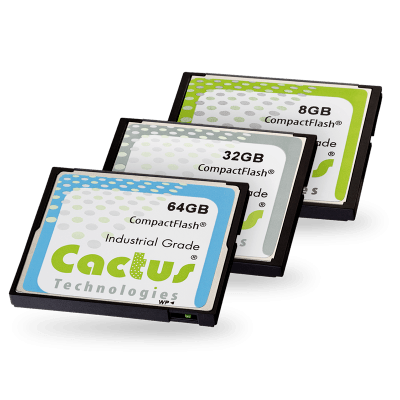 Industrial Grade CompactFlash cards have been the work horse for memory storage in embedded applications for two decades. This article looks at how they’re used in the system, different varieties and options available.
Industrial Grade CompactFlash cards have been the work horse for memory storage in embedded applications for two decades. This article looks at how they’re used in the system, different varieties and options available.
Due to their long history of success in industrial applications, Cactus plans to continue production of the Industrial CompactFlash cards for at least another decade.
What is a CompactFlash Card?
First the CompactFlash (CF) itself.It is a flash storage module based on an industry standard published and maintained by the CompactFlash Association. The specification was created in 1995 and is still pretty much the same today – although it has had multiple revisions for higher performance and support of non-memory devices.
The concept of the CompactFlash card was and is to provide a flash card with a standard host interface so the host system does not need to provide the flash storage management. Files are stored to the CompactFlash card in the same way they would be to a rotating hard disk drive.
The main reason CF was victorious was because the Miniature Card and SSFDC required host systems to provide flash management.
About the same time as the CompactFlash card was created, competing standards of the Miniature Card and the SSFDC (Solid State Floppy Disk Card) were attempting to win the standards battle. Over time, the CompactFlash card won this battle.
The main reason CF was victorious was because the Miniature Card and SSFDC required host systems to provide flash management. Every time there was a change of flash geometry or manufacturer, there was a need to change the driver. For embedded devices and consumer electronics this was and is still a challenge.
What are the specifications of a CompactFlash Card?
CF Cards all have 50-pin female connectors which mate to male connectors on the host system. The interface is Parallel ATA Interface (PATA) and many are configured in True IDE mode, which directly mimics an IDE hard disk drive.
While CF cards are available in either Type I (3.3mm) or Type II (5.0mm) form factors, almost all flash CompactFlash cards are in the Type I height form factor. This height includes the CompactFlash labels.
| DIMENSION | SPECIFICATION |
|---|---|
| LENGTH | 36.4 MM |
| WIDTH | 42.8 MM |
| THICKNESS (TYPE I / TYPE II) | 3.3 MM / 5.0 MM |
Regarding performance, there are a variety of products available on the market. Depending on the application, an extremely reliable card with slower performance or a cutting edge performance card with limited endurance may be the ideal solution.
For legacy system designs, there are even versions which disable DMA to eliminate host system issues.
How does a CompactFlash connect to a Host System?
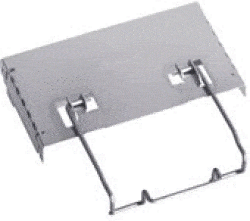
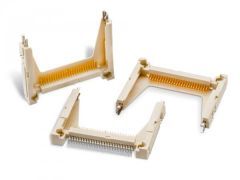
As mentioned earlier, the CompactFlash card has a 50-pin female connector which mates with a 50-pin male connector on the host system. Several different host connector configurations are available with the right angle version being most popular.
The 50-pin CF connector generally provide sufficient friction to hold the card in place even in the most challenging of shock and vibration applications. But, there are also some connectors which have clips to keep the CF card from backing out in rough environments. Some OEMs have placed a screw or standoff with a screw behind the CF card after installation to serve this same purpose.
Electrically many host designers connect the IDE signals directly to the 50-pin CF connector similar to an IDE hard disk drive. This method does not allow for hot swapping, which is typically not an issue for an embedded OEM system.
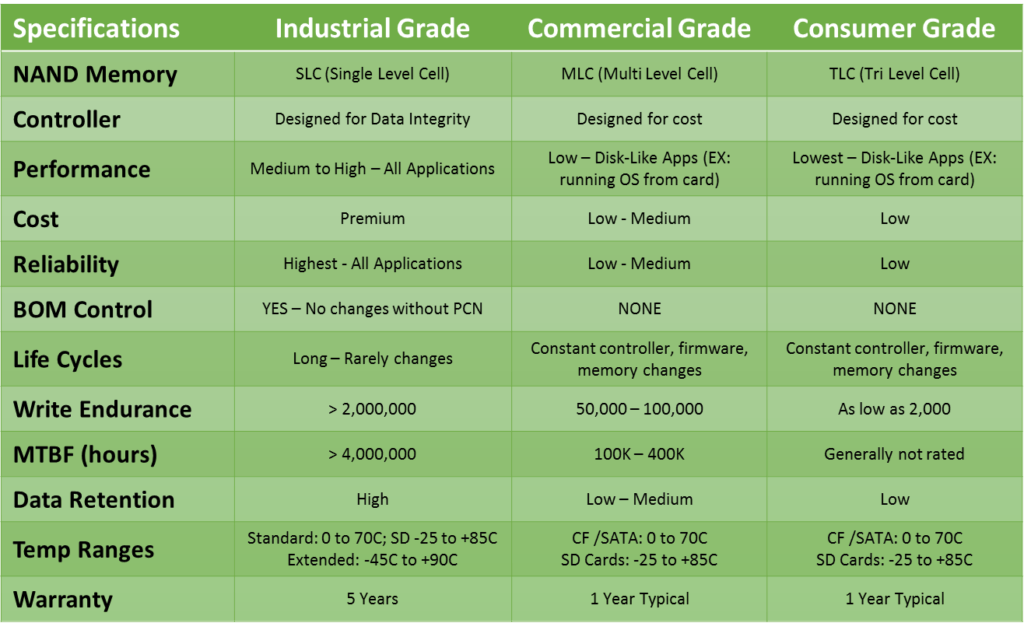
CompactFlash Optional Configurations
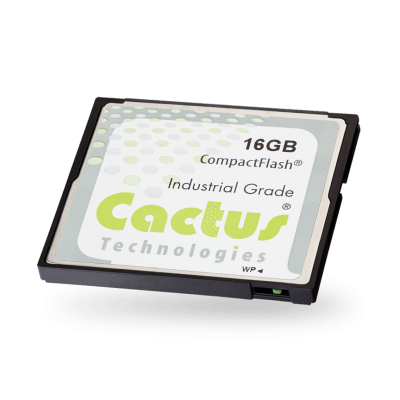
There are many different configurations of CompactFlash cards as well as special feature options available. Several of these are briefly covered below. If you need assistance or more details – please feel free to contact us.
Fixed / Removable Mode: There is a bit set in the controller at time of manufacture in either Removable (default) or Fixed mode. This bit setting has no effect on the CF flash card itself, but is used by some older Windows operating systems to determine whether to allow the Windows OS to boot from the CF card. These older Windows OS would NOT allow themselves to be mounted (booted) on a card with Removable setting. So, Cactus offers a Fixed configuration for these occasions.
DMA-On / DMA-Off: DMA stands for Direct Memory Access and is normally a good thing since it improves performance. The faster the DMA mode the faster the performance. But in some cases the default DMA-On mode causes legacy systems to hang. A DMA-Off configuration is available for these instances.
Standard / Extended Operating Temperature: Standard operating temperature for most CompactFlash cards (including Industrial Grade) is 0C to 70C. For applications used in wider temperature environments there is an Extended operating temperature Compact Flash with -45C to 90C range.
Military Erasure Features: There are multiple military erasure routine standards. They require different patterns to be written one or more times to overwrite existing data on the CompactFlash. Cactus has a 303 Pro Series of Industrial Grade CF which supports many of the most popular routines.
Password Protect: The ATA Security Erase command has a password protect feature and is supported by some CompactFlash cards. When executed, a password needs to be entered to access the data on the CF card.
Physical Write Protect Switch: For applications where data is gathered and needs to protected and in applications where data is preloaded and cannot be overwritten, Cactus offers a CF card with a physical write protect switch on the back rail. This Industrial Grade CompactFlash card is in our 303 Pro Series and is shown in the image above.
If you’re an OEM designing an embedded system or other system requiring a highly reliable flash storage device such as CompactFlash, please contact us for more details.






